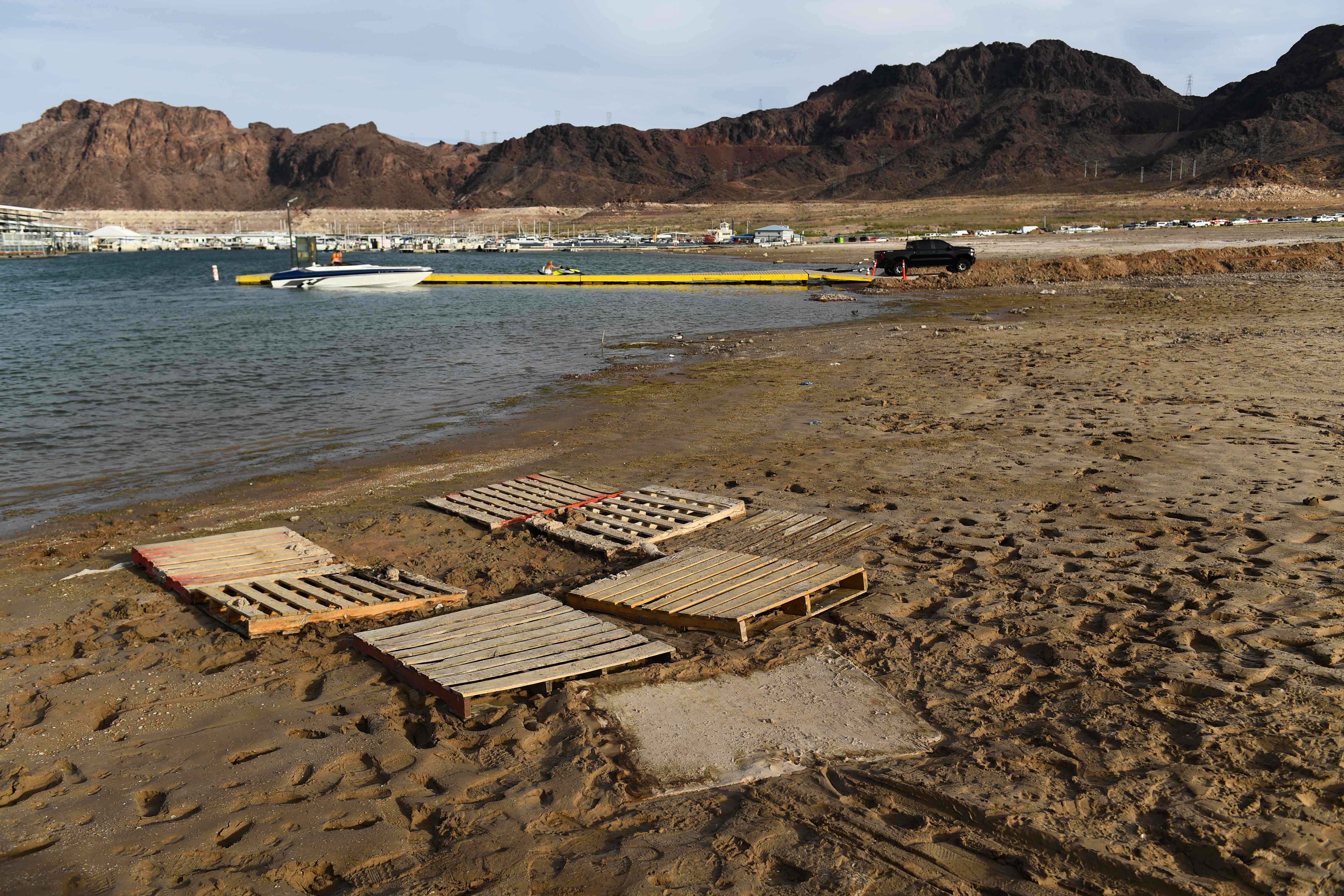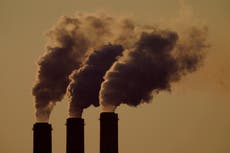From bodies to ancient relics: The startling and grim discoveries unearthed by the climate crisis
As the water levels drop to record lows and long-frozen ice starts to melt, relics from history are coming to the surface
Your support helps us to tell the story
This election is still a dead heat, according to most polls. In a fight with such wafer-thin margins, we need reporters on the ground talking to the people Trump and Harris are courting. Your support allows us to keep sending journalists to the story.
The Independent is trusted by 27 million Americans from across the entire political spectrum every month. Unlike many other quality news outlets, we choose not to lock you out of our reporting and analysis with paywalls. But quality journalism must still be paid for.
Help us keep bring these critical stories to light. Your support makes all the difference.
Last week, boaters on Lake Mead stumbled upon the remains of a human body in a barrel.
The body is believed to be a murder victim from the 1970s or ’80s, which the Las Vegas Police Department assessed based on the individual’s clothing.
But the sudden re-emergence of a decades-old crime wasn’t the strangest part of the story – rather, it was that the barrel probably only surfaced because of the historically low water levels in the lake.
Water levels in Lake Mead, which pools behind the Hoover Dam along the border of Nevada and Arizona, are now at just 31 per cent of full capacity – a record low, and a result of the 20-year megadrought that has crippled the American west.
Drought in the western US has been exacerbated by the climate crisis and will likely get worse in the coming decades — in addition to all the melting ice, stronger storms, and intense heatwaves that the new climatic conditions will bring.
And around the world, these changing conditions are unearthing parts of the past that have been hidden for tens — if not thousands — of years.

A plane crash in California
Last year, workers testing imaging equipment at Folsom Lake outside Sacramento stumbled upon an old plane at the bottom of waters.
While the plane was initially believed to be wreckage from a 1965 crash that killed four people, it was later determined to be the wreckage of a 1986 plane crash with no fatalities.
It’s possible that these remnants became visible to the imaging equipment due to the lake’s extraordinarily low water levels as a result of California’s ongoing drought — around the time the plane was spotted, the lake was at just 34 per cent of its total capacity.
Ancient objects in Mongolia
On the other side of the world, warmer temperatures are causing ice and snow to melt in Mongolia — revealing long-hidden remnants of distant eras.
Scientists have found rope, arrowheads and even leftover animals parts from long-passed hunts as the ice recedes. These artifacts can offer archaeologists new information about human life in these eras, but scientists also warn that as these items are exposed to the elements, valuable historic information could be lost.
Ice Age wildlife
It’s not just ancient human life coming to the surface as ice melts. As permafrost and glaciers melt, the remains of animals from the last Ice Age are also coming to light.
In Russia, people have found preserved parts of mammoths and wooly rhinos — two species extinct for thousands of years. And in northern Canada, researchers found the remains of a wolf pup who died around 57,000 years ago, near the end of the Pleistocene era.
Often, these long-gone animals are extraordinarily intact, having been frozen in time by the preservative effects of a deep freeze for thousands of years. The wolf pup, for example, still had clear fur and skin visible, along with teeth and bones.
Water intake pipe in Lake Mead
Back in Lake Mead, water levels dropped low enough last month to reveal an intake pipe for a pumping station supplying Las Vegas with water — leaving it unable to drain water to the city.
The Southern Nevada Water Authority, the local water agency, completed construction on a new pumping station in 2020 — called the “low lake level pumping station” — with a much deeper intake pipe in anticipation of this scenario.
The new pumping station began operation last month as the higher valve emerged above the water’s surface.
Missing people and relics in the Alps
As ice melts in Europe’s tallest peaks, people who disappeared in the mountains decades ago are being found.
In 2017, the remains of a Swiss couple who died in 1942 were discovered near a melting glacier. Newspapers, as well as potential human remains, from a mid-century plane crash have also been discovered near the melting Mont Blanc in the French Alps.
And in the Italian Alps, melting ice has revealed a long-lost cave filled with supplies used by Austrian soldiers in World War I.
What’s next?
As the climate crisis continues, water levels could continue to drop, and ice could continue to melt — meaning there may be more discoveries revealed in the future.
A few of these revelations might also be more dangerous than others. Some scientists are worried that as permafrost in the Arctic melts, it could release pathogens not seen for years, threatening both people and wildlife.
For example, in 2016, a heatwave may have been responsible for an anthrax outbreak in Siberia, as a decades-dead reindeer carcass unthawed and released the bacteria, killing one child and hospitalizing numerous others — as well as over 1,000 reindeer.
And in Lake Mead, officials suggested to KLAS-TV that the recent homicide victim discovery may not be the last homicide victim to reappear as water levels drop to unprecedented lows.




Join our commenting forum
Join thought-provoking conversations, follow other Independent readers and see their replies
Comments